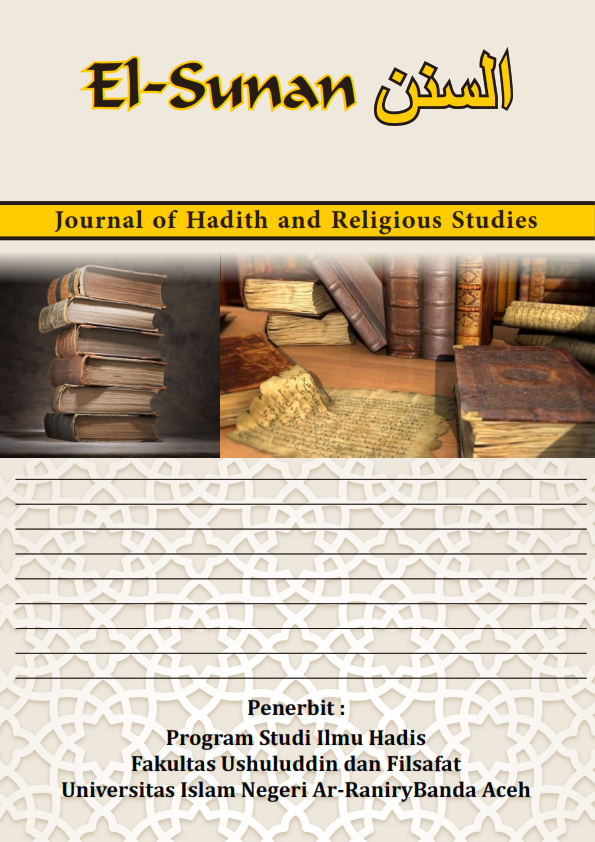The Influence of Intertextuality in the Manuscript Tarjumān al-Mustafīd by Sheikh ‘Abd al-Ra’uf Ali al-Fanshuri al-Jawi
DOI:
https://doi.org/10.22373/el-sunan.v2i2.6628Keywords:
Intertext, Turjuman al-Mustafid, Abd al-RaufAbstract
This study examines the intertextual influences in the Quranic exegesis manuscript Tarjumān al-Mustafīd by Sheikh ‘Abd al-Ra’uf Ali al-Fanshuri al-Jawi. By employing an intertextual approach, the research demonstrates that the manuscript is not a mere translation of works by al-Baiḍawi, al-Khazin, or al-Jalālain, as previously assumed. Instead, Tarjumān al-Mustafīd synthesizes and adapts excerpts from these sources alongside others, such as al-Ṡa’labi. Using descriptive-analytical methods and primary manuscripts housed in the Aceh Museum, this study focuses on the exegesis of Surah al-Baqarah to analyze intertextual techniques, including excerpts, parallels, and expansions. The findings reveal that Tarjumān al-Mustafīd integrates intertextual references from multiple tafsir texts while maintaining its originality and independent interpretive framework. This research contributes to a deeper understanding of intertextuality in Quranic exegesis within the Malay-Nusantara tradition.
References
Abdul Karim Bin Abdullah Al-Khudhair, Syarh Al-Lulu Al-Maknun Fi Ahwal Al-Asanid Wa Al-Mutun Li As-Syaikh Hafiz Bin Ahmad Bin Ali Al-Hakimi (Dar Kutub Al-Ilmiyyah, 2013).
Abu Abdullah Bin Ismail Bin Ibrahim Bin Al-Mughirah Al-Jafi Al-Bukhari, Al-Jami` Al-Musnad As-Shahih Al-Mukhtashar Min Umur Rasulillah SAW, Vol. 3 (Dar Thawq An-Naja, 2001).
Abu `Abdullah Muhammad Bin Yazid Al-Quzwaini, Sunan Ibnu Majah (Dar Al-Jail, 1998).
Abu Isa Muhammad Bin Isa At-Tirmidzi, Al-Jami Al-Kabir (Dar Al-`Arab Al-Islami, 1998).
Abu Husein Muslim Bin Hajjaj Bin Muslim Al-Qusyairi An-Nisaburi, Al-Jami As-Shahih Al-Musamma Shahih Muslim (Dar Al-Jail, tanpa tahun).
Abu Munzir Mahmud Bin Mustafa Bin Abdul Latif Al-Munawi, As-Syarh Al-Mukhtashar Li Nukhbah Al-Fikri Li Ibni Hajar Al-`Asqalani (Al-Maktabah Syamilah, 2011).
Ahmad Bin Hanbal, Musnad Imam Ahmad Bin Hanbal (Mu`assast Ar-Risalah, 1999).
Badr Abdul Hamid Hamisah, Ilmu Asbab Wurud Al-Hadits As-Syarif, Vol. 1 (Maktabah Ulum Al-Hadits, tanpa tahun).
Ibnu Hajar Al-Asqalani, *Fathu Al-Bari Syarh Shahih Al-Bukhari* (Maktabah Al-Asriyah, 2009).
Ibrahim Bin Muhammad Ibnu Hamzah Al-Husaini, Al-Bayan Wa Ta`rif Fi Asbab Wurud Al-Hadits As-Syarif, Vol. 1 (Al-Maktabah Al-Ilmiyah, 1982).
Muhammad Asri Bin Zainal Abidin, *Sabab Wurud Al-Hadits: Dhawabit Wa Maayir* (Dar Al-Kutub Al-`Ilmiyyah, 2006).
Muhammad Bin Muhammad Bin Sulaim Abu Syahbah, Al-Wasith Fi Ulum Wa Musthalah Al-Hadits (Dar Fikri Al-`Arabi, tanpa tahun).
Muhammad Rafat Sa`id, Asbab Wurud Al-Hadits (Wizarah Al-Awqaf Wa Syuun Al-Islamiyah, 1994).
Nuruddin Itir, *Manhaj Naqdi Fi Ulum Hadits* (Dar Al-Fikri, 1981).
Syed Abdul Majid Al-Ghauri, Al-Muyassar Fi `Ulum Al-Hadits (Dar Ibnu Katsir, 2009).
Syed Abdul Majid Al-Ghauri, Kamus Istilah Hadits (Dar As-Syakir, 2012).
Downloads
Published
How to Cite
Issue
Section
License
Copyright (c) 2024 Zainuddin Zainuddin

This work is licensed under a Creative Commons Attribution-NonCommercial-ShareAlike 4.0 International License.
- Authors retain copyright and grant the journal right of first publication with the work simultaneously licensed under an Attribution-NonCommercial-ShareAlike 4.0 International (CC BY-NC-SA 4.0) that allows others to share the work with an acknowledgment of the work's authorship and initial publication in this journal.
- Authors are able to enter into separate, additional contractual arrangements for the non-exclusive distribution of the journal's published version of the work (e.g., post it to an institutional repository or publish it in a book), with an acknowledgment of its initial publication in this journal.
- Authors are permitted and encouraged to post their work online (e.g., in institutional repositories or on their website) prior to and during the submission process, as it can lead to productive exchanges, as well as earlier and greater citation of published work.










